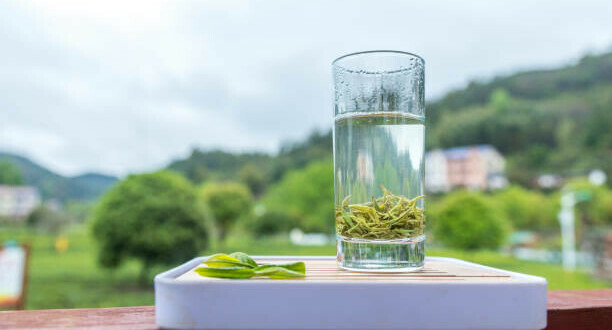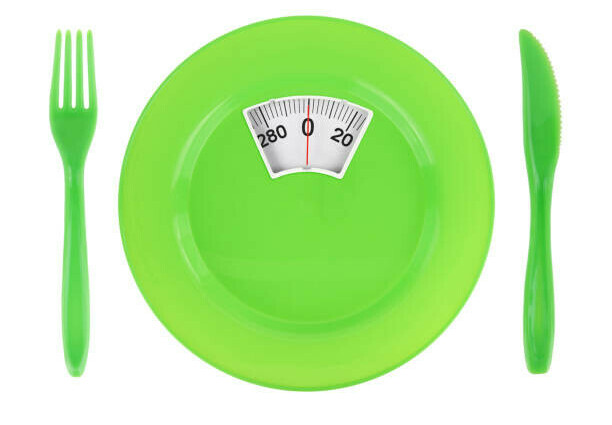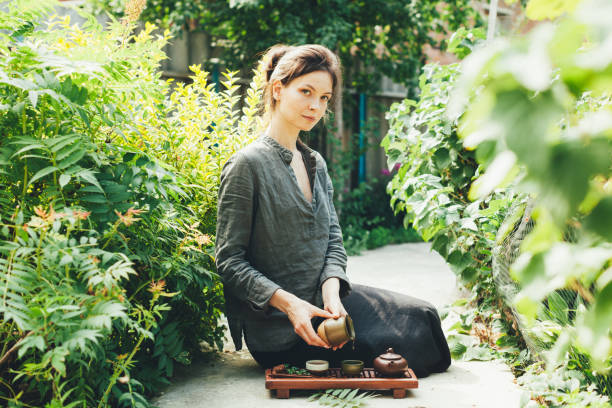Today, I’d like to talk to you about “Oolong Tea Vs Green Tea: Which Is Better For Stress Relief?”. I will start by introducing you to these two exceptional types of tea: Oolong and Green tea.
These teas go beyond their extensive history and detailed production; they are essential for individuals seeking comfort in a warm cup. You will learn about their extensive historical backgrounds and how each has established a distinct presence in various cultures worldwide. Rest assured, their origins are as captivating as the flavors they provide.
I will also explain how both teas are derived from the same leaf but are transformed into unique beverages through their individual production methods. It’s not just about plucking leaves; it’s an art that has been honed over centuries. You will be provided with a short summary of the health benefits of both Oolong and Green tea.
The potential benefits are substantial, from improving mental clarity to potentially reducing disease risk. Therefore, this is not just about pleasure; it’s also about nourishment.
Unveiling the Properties: Oolong vs. Green Tea

What distinguishes Oolong tea from Green tea, starting from their origins, figuratively and literally? When we delve into their source and beginnings, we find that both teas come from the same plant, Camellia Sinensis. However, the critical difference lies in their unique processing methods. Oolong tea, known for its partial fermentation, goes through a complex process of withering, rolling, and repeated oxidation, resulting in diverse flavors. On the other hand, Green tea skips this lengthy process and is quickly heated to stop oxidation, preserving its fresh, vegetal characteristics.
The fundamental divergence between these two teas is in their flavor and taste. Oolong can vary widely, ranging from sweet and fruity to rich and smoky, depending on the level of fermentation. In contrast, Green tea usually has delicate, grassy notes, sometimes with a subtle hint of bitterness or sweetness. For those exploring the intricate world of teas, the broad spectrum of flavors offered by Oolong provides an adventurous journey. In contrast, Green tea offers a calm, more predictable sipping experience that is consistently refreshing.
The visual appeal of tea also plays a part. Oolong and Green tea differ in appearance as well. Oolong typically has a darker, amber hue, while Green tea tends to be a lighter green to yellow. The look of the tea can set the stage for the experience; the rich colors of Oolong hint at its complexity, while the lightness of Green tea suggests a cleaner taste.
Both teas are potent in terms of packing a nutritional punch. Oolong tea contains antioxidants, vitamins, and minerals that promote brain health and metabolism. On the other hand, green tea is famous for its catechins, especially EGCG, which have been thoroughly researched for their beneficial effects on health. Each offers a unique array of nutrients that can contribute to a healthy lifestyle.
Navigating these distinctions, we recognize that Oolong and Green teas offer more than just refreshing beverages. Their distinct characteristics showcase the diversity of experiences that tea can provide. It’s also evident that these differences affect their potential health benefits, particularly regarding stress relief, which we’ll explore next. By further exploring their advantages, we gain insight into which tea might best serve us in our pursuit of tranquility and deepen our appreciation for the art of tea-making.
Delving into the Health Benefits

When deciding which tea is best for you, consider the health benefits of each. Let’s explore how Oolong and Green tea contribute to your well-being.
Oolong tea provides a variety of advantages. Consuming this aromatic tea regularly could assist in regulating blood sugar levels, which may help prevent diabetes. Additionally, Oolong tea has been associated with enhanced heart and cardiovascular wellness. Moreover, it might contribute to weight management, enhance cognitive function, and offer protective properties against specific types of cancer. Oolong tea also promotes dental and bone strength, relieves eczema, and supports gut health and the immune system.
On the other hand, Green tea is a powerhouse in its own right. It has a reputation for enhancing the immune system and aiding the body in preventing typical illnesses. It also simplifies improvements in brain function and heart health. Additionally, Green tea supports dental health and weight management, making it a clear choice for anyone looking to enhance their health.
Regarding stress relief, it’s worth noting that both teas contain caffeine, with Oolong having slightly more, but both in lower amounts than coffee. The caffeine in these teas interacts with other compounds like L-theanine, moderating its effects for a gentler boost in mental alertness and a calmer state of mind, which is crucial for managing stress.
While both teas offer impressive health benefits, it’s important to remember that they are not cure-alls. Excessive intake may result in side effects like restlessness, migraines, or gastrointestinal discomfort. Listening to your body and choosing a tea that aligns with your caffeine tolerance and health goals is essential.
If you’re interested in reaping these benefits and aiming for a healthier you, the next section, ‘Culinary Considerations and Weight Management,’ will provide guidance on brewing these teas and incorporating them into your weight management plans. Stay tuned!
Culinary Considerations and Weight Management

Are you interested in using oolong and green tea in cooking? I’ve got you covered. The right temperature and steep time are crucial for brewing. For oolong, aim for a temperature of 185-205 F and steep for 1 to 5 minutes. Green tea prefers a cooler temperature, ranging from 150-180 F, and a steep time of 1 to 3 minutes. Experiment to find your preferred taste.
Let’s discuss ingredients and cooking advice. Using loose-leaf teas can enhance flavors and potentially provide health benefits. You can even add leaves directly to soups or marinades for an extra kick. Remember, the flavor of tea in recipes can be delicate, so pair it with ingredients that won’t overpower its subtle taste.
Oolong and green tea are excellent choices for those mindful of their weight. They are low in calories, can boost metabolism, and may reduce fat absorption. However, they are not miracle solutions. Ensuring a well-rounded diet and consistent physical activity is crucial for weight loss.
If you’re interested in using tea to aid weight loss, start by replacing sugary drinks with a cup of oolong or green tea. It’s a simple swap that reduces empty calories and can help curb cravings. Remember that tea alone is not guaranteed weight loss; it should complement a healthy lifestyle.
What’s next? In section 5, we will explore oolong tea in the context of personal well-being, addressing common questions and explaining how to enjoy its full benefits. Stay tuned if you want to learn more about incorporating oolong tea into your daily routine for mental and physical wellness.
Exploring Personal Well-being with Oolong Tea

I plan to discuss why Oolong tea is more than just a drink; it’s a fulfilling experience that can improve your overall well-being.
The diverse health advantages of Oolong tea elevate it beyond just a soothing beverage. It has been associated with enhanced mental acuity, skin health, and the potential to fortify bones and teeth. If you’re interested in managing eczema or seeking anti-inflammatory properties, Oolong might become your new ally.
In my view, savoring Oolong tea is an art form in itself. You don’t simply consume it; you delight in its intricacy. The ideal way to savor Oolong is to find a peaceful moment where sipping slowly transforms into a mindful, calming ritual.
You can always modify your approach later on, but if you want to start off on the right foot, consider your consumption in terms of timing and amount. A good guideline is to drink Oolong tea later in the day, avoiding it late at night due to its moderate caffeine content.
So, for those wondering, ‘Can I have Oolong tea on an empty stomach?’ The answer is yes but with a condition. It’s generally gentler on the stomach than other caffeinated beverages, but observing how your body responds and possibly pairing it with a light snack is wise.
Don’t stress too much about achieving perfection when brewing your first cup. Your initial attempt doesn’t have to be your last. Experiment to find the brewing times and temperatures that work best for you.
Concluding Insights: Which Tea Triumphs for Stress Relief?
I’ve guided you through a detailed comparison of Oolong and Green tea, highlighting their distinct qualities, and roles in managing stress among many other health benefits. Now, it’s time to summarize all this information and answer the critical question: Which tea should you choose for a calming effect amid life’s ongoing pressures?
To quickly review, Oolong tea offers a wide range of potential health benefits, from enhancing mental alertness to combating inflammation, making a strong case for consideration. Its L-theanine content could be especially advantageous, as it is linked to increased mental focus and relaxation without causing drowsiness.
On the other hand, Green tea is renowned for its high antioxidant levels, ability to improve brain function, and support for the immune system. Its lower caffeine content compared to Oolong may also make it a better choice for those sensitive to caffeine’s effects, especially in the evening.
Our exploration clearly shows that both teas have their own merits in promoting well-being and potentially helping to relieve stress. However, if you’re looking for a tea that may provide a broader range of health benefits, mainly focusing on mental clarity and alertness, Oolong might be the way to go. Nevertheless, remember that your initial choice doesn’t have to be your only one.
The best tea for stress relief is the one you enjoy most. Preparing and savoring a cup of tea itself is a mindful practice that can reduce stress. Therefore, I encourage you to try both Oolong and Green tea, paying attention to how each one makes you feel and selecting the one that resonates with your taste and your body’s response.
Ultimately, whether you prefer the richly aromatic world of Oolong or the crisp, refreshing realm of Green tea, understand that both provide a haven from the daily hustle and bustle.
I hope you’ll embrace the ritual of tea drinking as a cherished pause for reflection and relaxation in your routine, a simple yet profound way to nurture your mind, spirit, and body.
I would love to receive your comments down below, in case of any.

